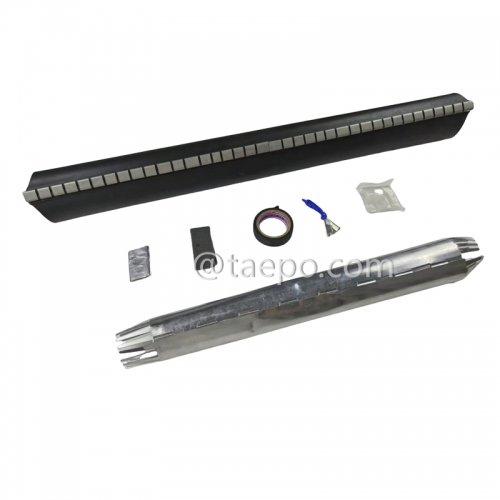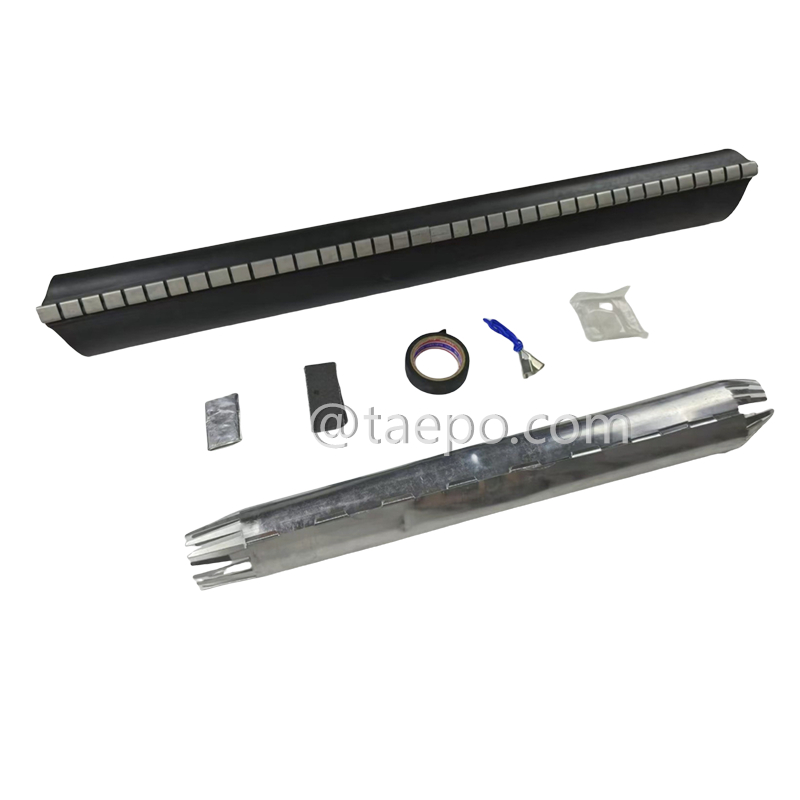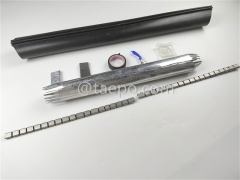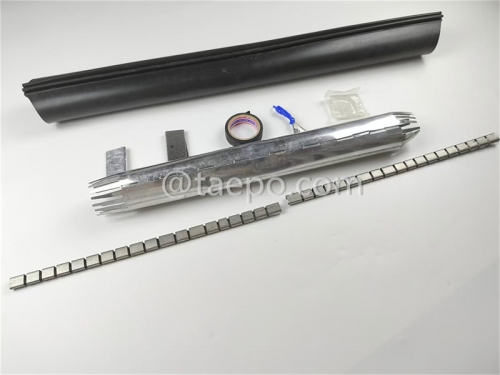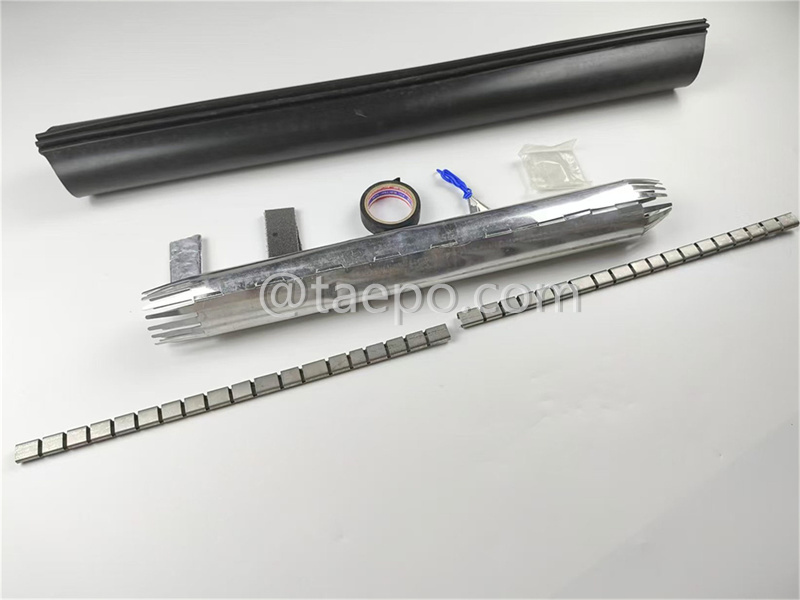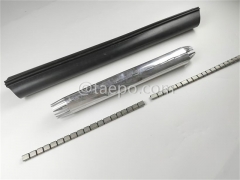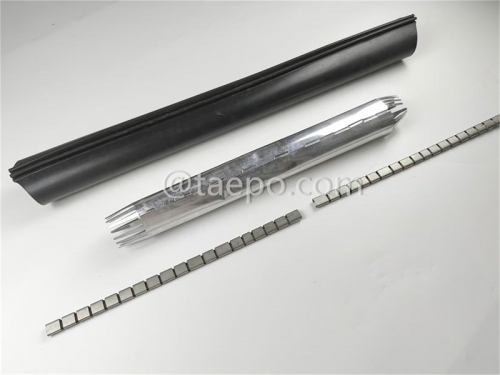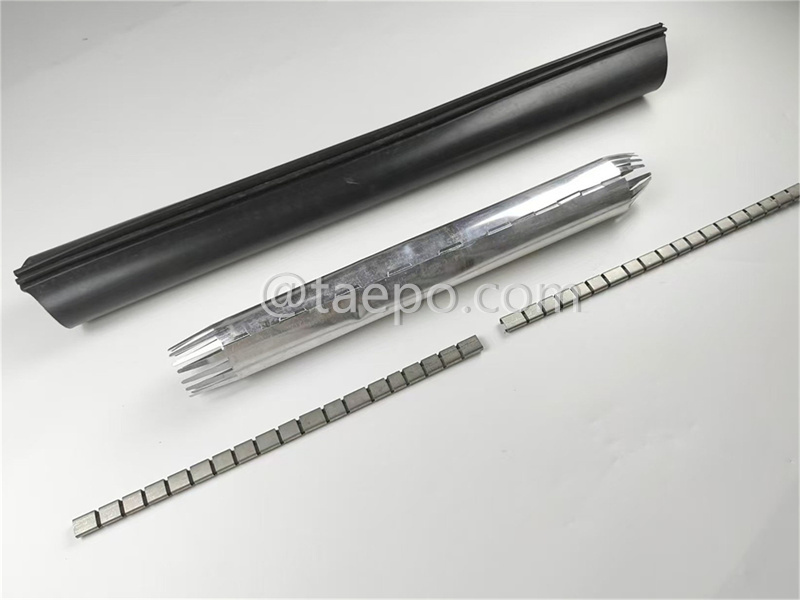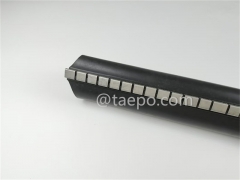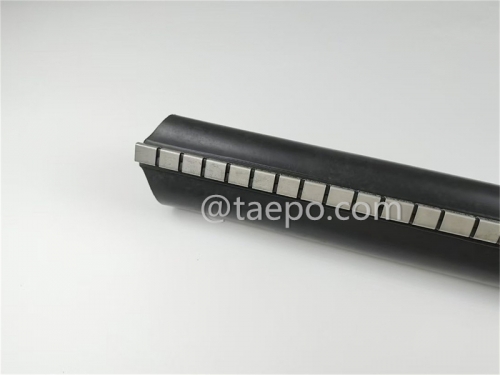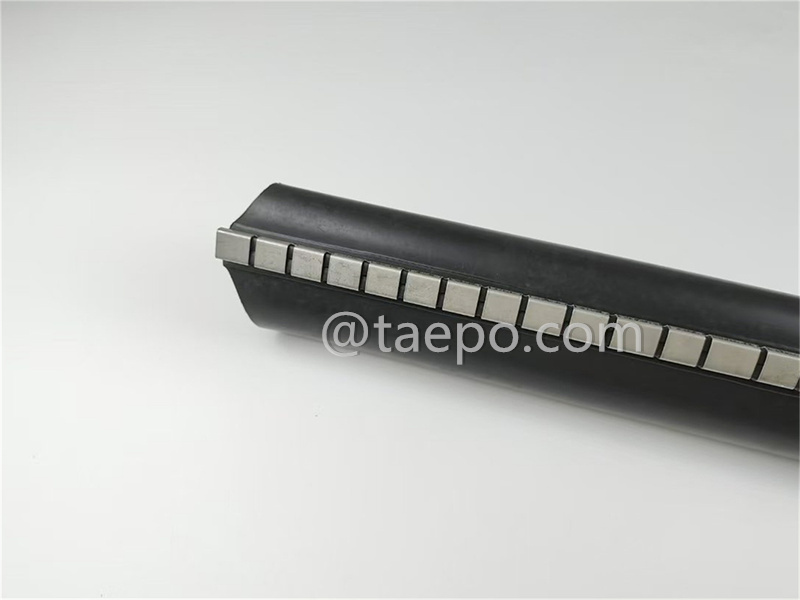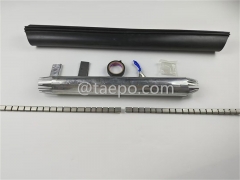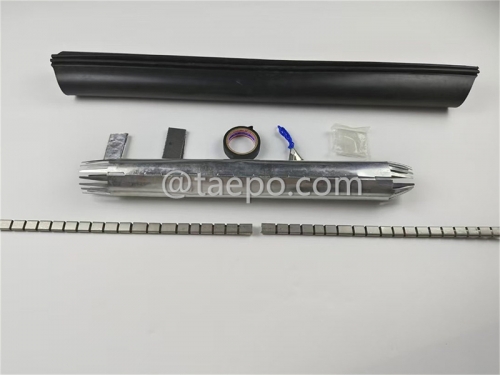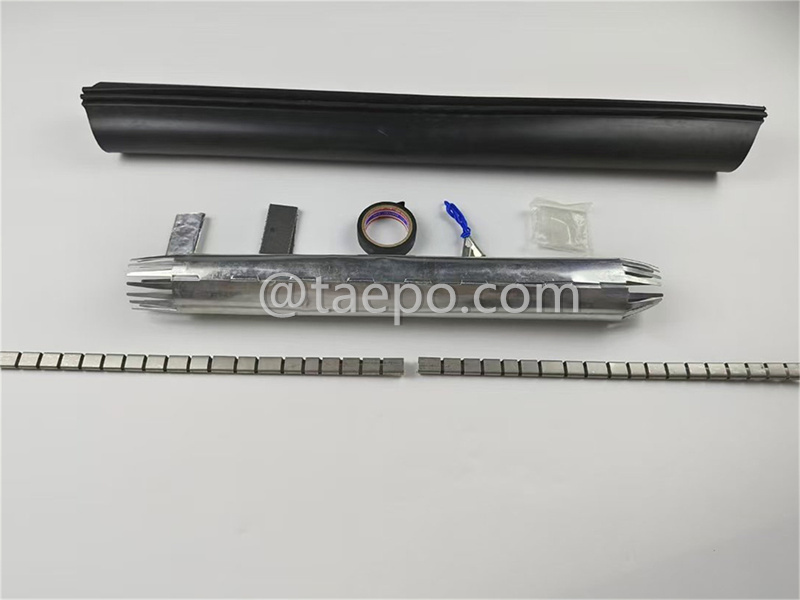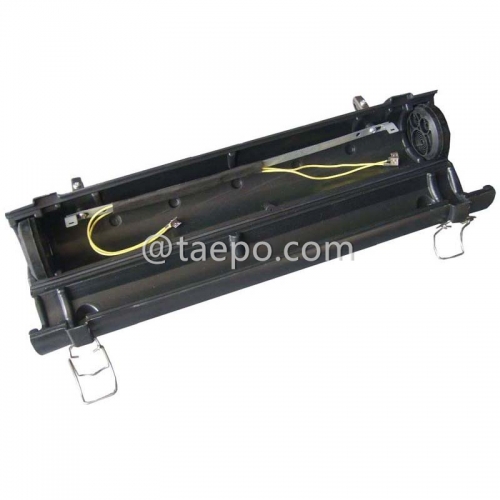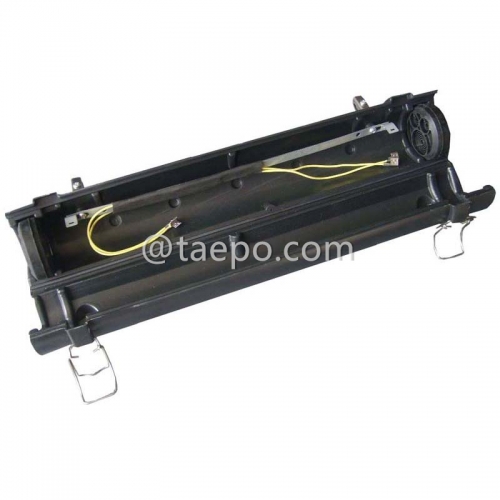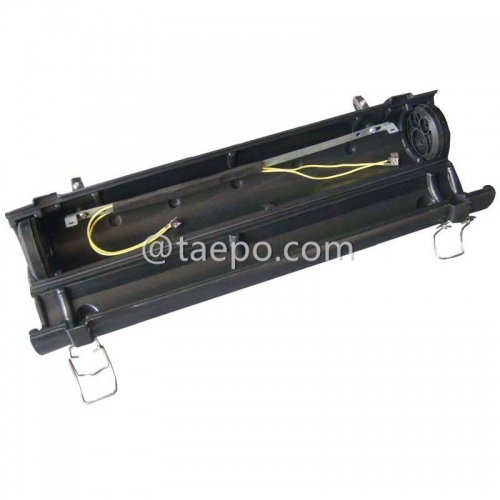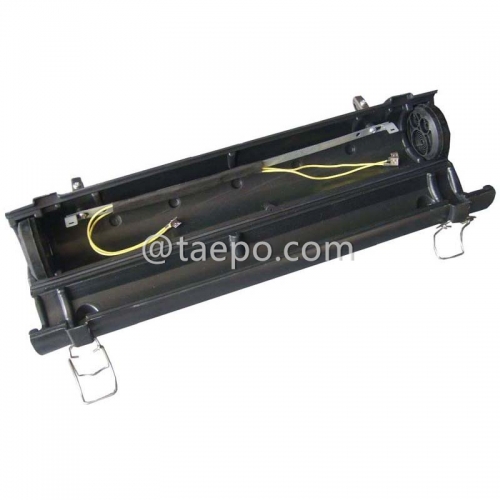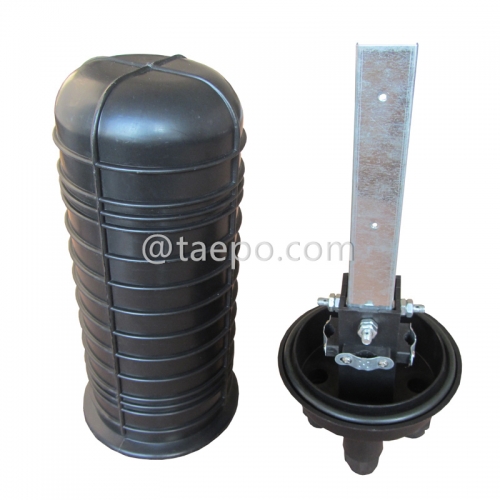I. Product Overview
Purpose:
RSB cable heat-shrinkable tubing is mainly used for the insulation, sealing, and protection of wires and cables. Especially during the splicing of communication cables, it can provide excellent insulation performance and sealing effects, ensuring the safe and stable operation of cable joints.
Characteristics:
The product features a unique structure, fast shrinkage speed, high heat-shrink ratio, strong shrinking force, and excellent weather resistance. Additionally, the seam is sealed with carrier adhesive, making it more reliable for waterproofing and moisture resistance. The hot-melt adhesive has a wide temperature range of adaptability and can be used in both high and low-temperature environments.
II. Technical Specifications
Operating Environment Temperature: Typically -30°C to +60°C, with an atmospheric pressure of 86,106 Kpa.
Splicing Construction Environment Temperature: Should be between -10°C and +45°C.
Tensile Strength: The tensile strength of the heat-shrinkable tubing material reaches 15 MPa. After thermal aging at 150°C for 168 hours, the tensile strength can still maintain a high level, such as reaching 13.7 MPa.
Dielectric Strength: ≥12 KV/mm, indicating good insulation performance.
Longitudinal Shrinkage Rate: The longitudinal shrinkage rate after shrinking is ≤10%, ensuring that the tubing can tightly fit the cable surface during the shrinking process.
III. Specifications and Models
RSB cable heat-shrinkable tubing comes in various specifications and models. For example, in the model "42/15-300", "42/15" indicates that the inner diameter of the aluminum tube is 42 mm, capable of accommodating a cable with a minimum diameter of 15 mm; "300" may represent the cable pitch or other related parameters; Different specifications and models of RSB cable heat-shrinkable tubing are suitable for the splicing needs of cables of different diameters and types.
IV. Manufacturing Process
The manufacturing process of RSB cable heat-shrinkable tubing mainly includes mixing and granulating, extrusion molding, radiation crosslinking, and expansion shaping. By precisely controlling the process parameters of each production step, such as temperature, speed, and pressure, heat-shrinkable tubing products with excellent performance can be produced.
V. Application Fields
RSB cable heat-shrinkable tubing is widely used in the splicing of overhead and buried communication cables and is also suitable for other wire and cable scenarios requiring insulation, sealing, and protection. It has extensive applications in the power, communication, transportation, and construction industries.
VI. Precautions
When using RSB cable heat-shrinkable tubing, ensure that the construction environment temperature meets the product requirements and avoid operating at excessively low or high temperatures.
The tubing should be heated uniformly during the shrinking process to avoid local overheating that may lead to performance degradation or damage.
After the tubing shrinks, a sealing check should be conducted to ensure no bubbles are escaping from the joint and the air pressure is stable.
In summary, RSB cable heat-shrinkable tubing is a cable splicing material with excellent performance and wide applications. Its detailed information includes product overview, technical specifications, specifications and models, manufacturing process, application fields, and usage precautions.
Advantages and Disadvantages of RSB Cable Heat-Shrinkable Tubing
Advantages
Excellent Insulation Performance:
RSB cable heat-shrinkable tubing can effectively isolate electrical contact between wires, preventing short circuits and leakage currents, ensuring the safe and stable operation of the cable system.
Good Sealing Performance:
The product tightly binds to the cable surface through hot-melt adhesive, forming a dense protective layer that effectively prevents moisture, dust, and other impurities from entering the cable joint, thereby extending the cable's lifespan.
Strong Mechanical Protection:
RSB cable heat-shrinkable tubing has high tensile strength and wear resistance, capable of resisting external mechanical impacts and compression to a certain extent, protecting cable joints from physical damage.
Adaptable to Various Environments:
The product has good weather resistance and corrosion resistance, capable of adapting to various harsh environmental conditions, such as high temperature, high humidity, and high corrosion, ensuring the long-term stable operation of cable joints.
Easy Installation:
The installation process of RSB cable heat-shrinkable tubing is simple and convenient. Only the tubing needs to be placed over the cable joint and heated to shrink, without requiring complex processes or equipment, improving construction efficiency.
Aesthetic and Neat Appearance:
Cable joints wrapped with heat-shrinkable tubing have a clean and aesthetic appearance, meeting the aesthetic requirements of modern engineering and facilitating later maintenance and inspection work.
Disadvantages
Relatively High Cost:
Compared to other cable protection materials, the production process and material requirements of RSB cable heat-shrinkable tubing are higher, resulting in a relatively higher cost. This may increase the overall investment of cable splicing projects.
High Installation Skill Requirements:
Although the installation process of RSB cable heat-shrinkable tubing is relatively simple, it still requires certain professional skills and experience. Improper installation or inaccurate temperature control during heating may lead to uneven shrinking of the tubing or the formation of bubbles, affecting insulation and sealing effects.
Careful Material Selection:
Different specifications and models of RSB cable heat-shrinkable tubing are suitable for different cable joints and working environments. Therefore, factors such as cable diameter, working voltage, and environmental conditions must be fully considered when selecting materials to ensure that the selected heat-shrinkable tubing meets actual needs.
In summary, RSB cable heat-shrinkable tubing has significant advantages in cable splicing and protection but also has some disadvantages that need attention. In practical applications, it is necessary to select suitable materials and standardize construction operations according to specific needs and conditions to ensure the safe and stable operation of the cable system.
Usage Instructions for RSB Cable Heat-Shrinkable Tubing
The usage of RSB cable heat-shrinkable tubing mainly includes the following steps:
I. Preparation Stage
Measure the Cable Diameter:
Use a caliper or gauge tool to accurately measure the diameter of the cable or connector that needs protection. This is the basis for selecting the appropriate size of heat-shrinkable tubing.
Select the Heat-Shrinkable Tubing:
Based on the measured cable diameter, select a heat-shrinkable tubing with a diameter slightly larger than the cable diameter. At the same time, pay attention to the shrink ratio of the heat-shrinkable tubing to ensure it can tightly fit the cable after heating.
Clean the Cable:
Remove burrs, sharp corners, oil, impurities, etc., from the cable to prevent puncturing the heat-shrinkable tubing or affecting the shrinking effect during the heating process.
II. Cutting and Sleeving
Cut the Heat-Shrinkable Tubing:
Cut the heat-shrinkable tubing to the corresponding length based on the length of the cable that needs protection. Ensure that the cut is neat and smooth to avoid producing burrs or cracks.
Sleeve the Heat-Shrinkable Tubing:
Slide the cut heat-shrinkable tubing onto one end of the cable and move it to the appropriate position along the cable. For cables with bends, pay attention to smoothing out the heat-shrinkable tubing at the corners to avoid wrinkles.
III. Heating and Shrinking
Select a Heating Tool:
Common heating tools include hot air guns, ovens, or hair dryers. Ensure that the heating tool can uniformly heat the heat-shrinkable tubing to avoid local overheating.
Heat and Shrink:
Use the heating tool to heat the heat-shrinkable tubing. During heating, maintain an appropriate distance to avoid direct flame contact with the tubing. At the same time, move the heating tool slowly from one end to the other, ensuring that the heat-shrinkable tubing is uniformly heated.
During the heating process, the heat-shrinkable tubing will gradually shrink and tightly fit the cable. Observe the shrinking of the heat-shrinkable tubing to ensure no bubbles are formed.
IV. Cooling and Inspection
Cooling:
After heating, allow the heat-shrinkable tubing to cool naturally. Do not bend or move the cable hastily to avoid affecting the shrinking effect.
Inspection:
After cooling, inspect whether the heat-shrinkable tubing tightly fits the cable, with no bubbles or wrinkles. At the same time, ensure that the cable joint is well protected by insulation and sealing.

